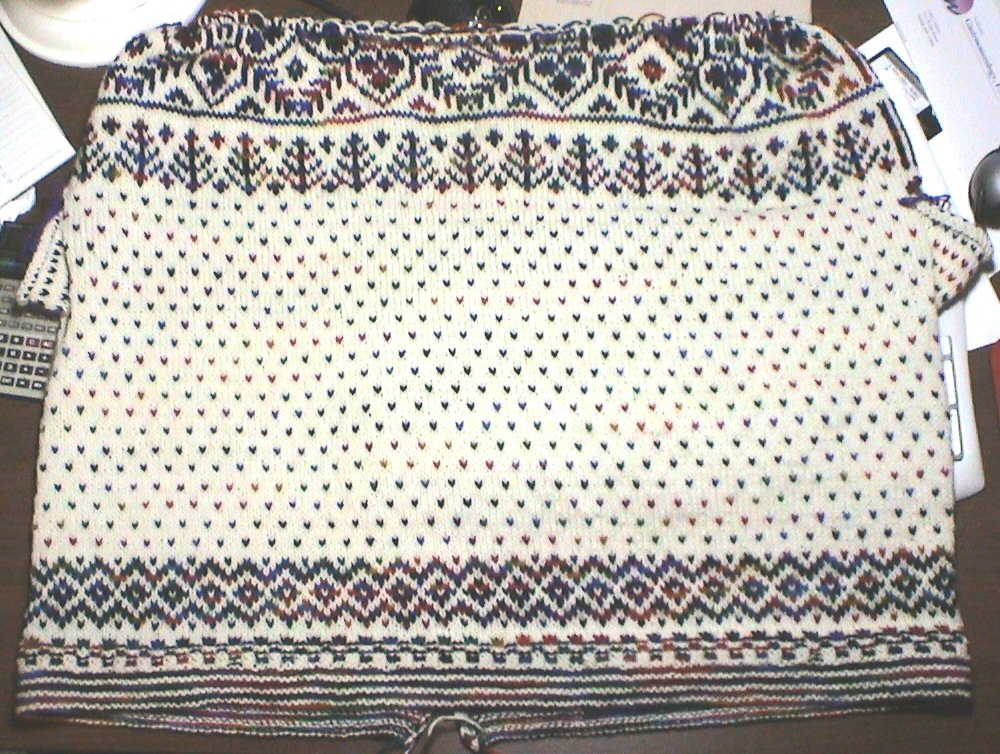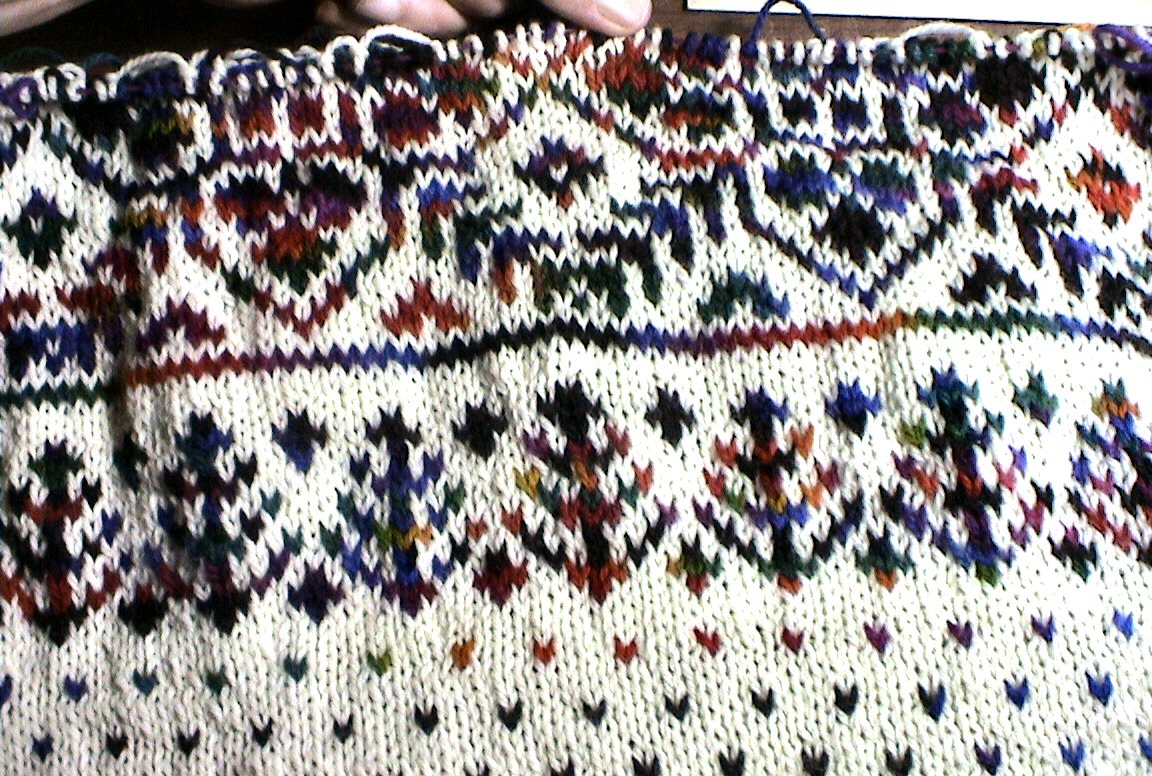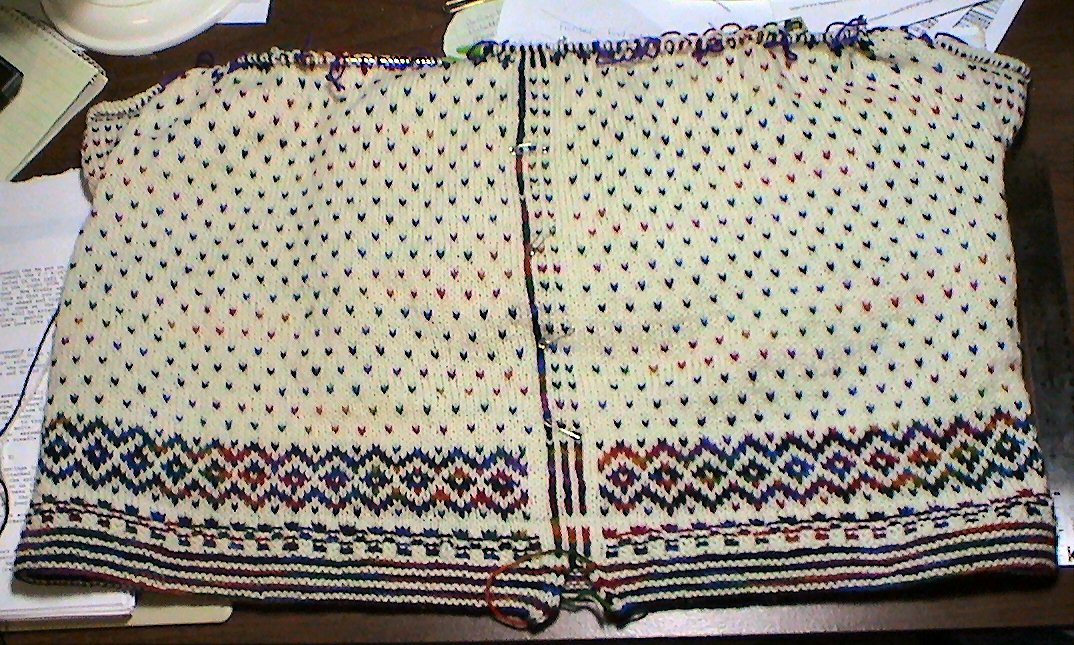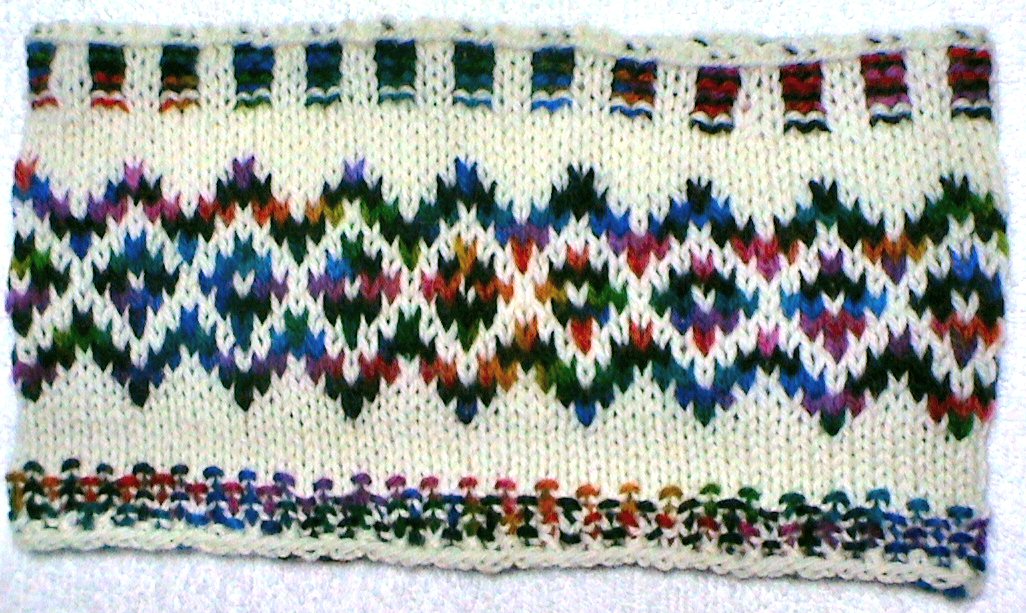Hi Everyone! I hope more of you will share some photos of your yarn and stitch swatches with us soon! I love seeing what everyone is doing.
It sounds like a lot of you are ready to start working on the headbands. This is a great way to do a gauge swatch that you can use afterwards, instead of just collecting swatches in a huge box like I do. I actually love swatching -- trying out new yarns, colors, and stitch patterns -- and so I do have a giant carboard carton full of swatches in the closet in my spare room.
I chose a headband for the practice project in the Norway chapter of
Ethnic Knitting Discovery because a ski headband seemed to be such a great match for the ski sweaters. Even if you don't ski, you can probably find a few cold days in the winter to sport a wool headband.
If you look on page 109-111 in your book, you'll get an overview of how I approached each project in the book. So by making the headband, in addition to getting a swatch you can actually use, you'll also get familiar with the way I've structured the steps for designing and knitting your sweater.
Get Ready (page 109)In this section, I discuss the yarn and knitting needles needed for the project. We've already talked about yarn
here and
here, so I'll bypass that right now.
All I want to say about needles, is don't ever take suggested needle sizes as a rule. You have to learn your own knitting tension and do the swatch to be sure you have the right size. It's less important for a headband than for a sweater -- because it's a smaller project and because there are fewer stitches so a slight variation in gauge will make less difference in the finished circumference than it would on a larger piece with more stitches. After knitting a lot for several years, I've discovered that I almost always have to go down two needle sizes for flat knitting because I work very loosely, but for circular knitting, I almost always get the gauge on the yarn ball band with the suggested needle sizes. The more you knit, the more you get to know your own style and quirks.
Get Set (page 110)In this section I talk about the gauge and size of the project. Before making a gauge swatch, you have to select the stitch you're going to use. You may notice that you get a different gauge for colorwork than you do for plain knitting. A lot of knitters will go up a needle size or two on the colorwork portion of a project that also has plain areas to get the same gauge in both portions. The book says to make a gauge swatch before starting the headband, but if you're familiar with your knitting tension and you don't mind knitting out a headband if it's really off in size, you can skip that step. After all, we're making the headband AS a gauge swatch for a sweater!
I've got some suggested sizes for headbands in this section. For the sweaters I don't give any pre-sized options because we'll all be creating a custom-fitted garment. But since heads are more standard than torsos, I threw in some guidelines here.
Now you're ready to start filling in the numbers on the schematic and spreadsheet.
Knit (pages 110-111)Here's where I present the three different ways to plan and knit your garment. Feel free to photocopy these pages so you can write in your own numbers and still keep the book clean for future projects.
Option 1: The Visual PlanMy favorite way is to just figure out how many stitches I need to start, cast on, and wing it. For those who like to make things up as they go, I've provided a little schematic where you can mark down a few important numbers and get those stitches on the needles!
Option 2: Using a Planning WorksheetThis section walks you through all the calculations you'll need to make your garment. There are measurements and stitch counts. It's a small table for a headband, and two larger ones for the sweaters. There are blanks for you to fill in your own numbers, as well as sample calculations that I've done and a description of what you're figuring out on each line. For a headband, you need only three numbers and one calculation:
1. Stiches per inch.
2. The circumference (a measurement)
3. The number of stitches (gauge per inch times the circumference, rounded off to an even multiple of your pattern).
If your pattern doesn't fit nicely, see page 32-34 for tips on centering patterns, or chart out your entire headband on graph paper or with software.
I didn't add any edging to this headband because I designed them to fit snugly and stretch to fit on the head, so the stretching will eliminate the tendency for the edge roll. I bought this headband when I was in Alaska in 2004 and it's lined with polar fleece fabric for extra warmth and windproofing. It's just plain Stockinette stitch, which makes it work nicely for a gauge swatch.
 Option 3: A Step-by-Step Project Sheet
Option 3: A Step-by-Step Project SheetThis is for those who like more details before moving forward, or for those who are frequently interrupted or need to take long breaks from projects. You'll notice that there are gray numbers in circles in this section, these match up to the numbers on the Visual Plan. You'll aso see green letters in fun shapes in the margins, these match up to the numbers you've calculated in the spreadsheet. Match everything up, fill in your numbers, and you basically have a finished pattern to knit from.
So there you have it, you can proceed in any fashion that matches your personality. If you have any questions, feel free to post them here in the comments.
OK, now some of you may have patterns that end up being too wide for a headband. In a few days I'll post instructions on how to continue knitting and work a crown so you can have a hat!

 I'm fairly happy. It's the right short length, but I'm not sure about the shoulders. It's just so bulky to be a drop-shoulder (it's turned under in this photo). I'm trying figure out if I can cut a bit out of the sleeve holes and make the sleeves correspondingly larger at the top to fit. Right now the upper sleeve circumference is about 19", so another inch would be good.
I'm fairly happy. It's the right short length, but I'm not sure about the shoulders. It's just so bulky to be a drop-shoulder (it's turned under in this photo). I'm trying figure out if I can cut a bit out of the sleeve holes and make the sleeves correspondingly larger at the top to fit. Right now the upper sleeve circumference is about 19", so another inch would be good.





























 Yarn and Color:
Yarn and Color:








